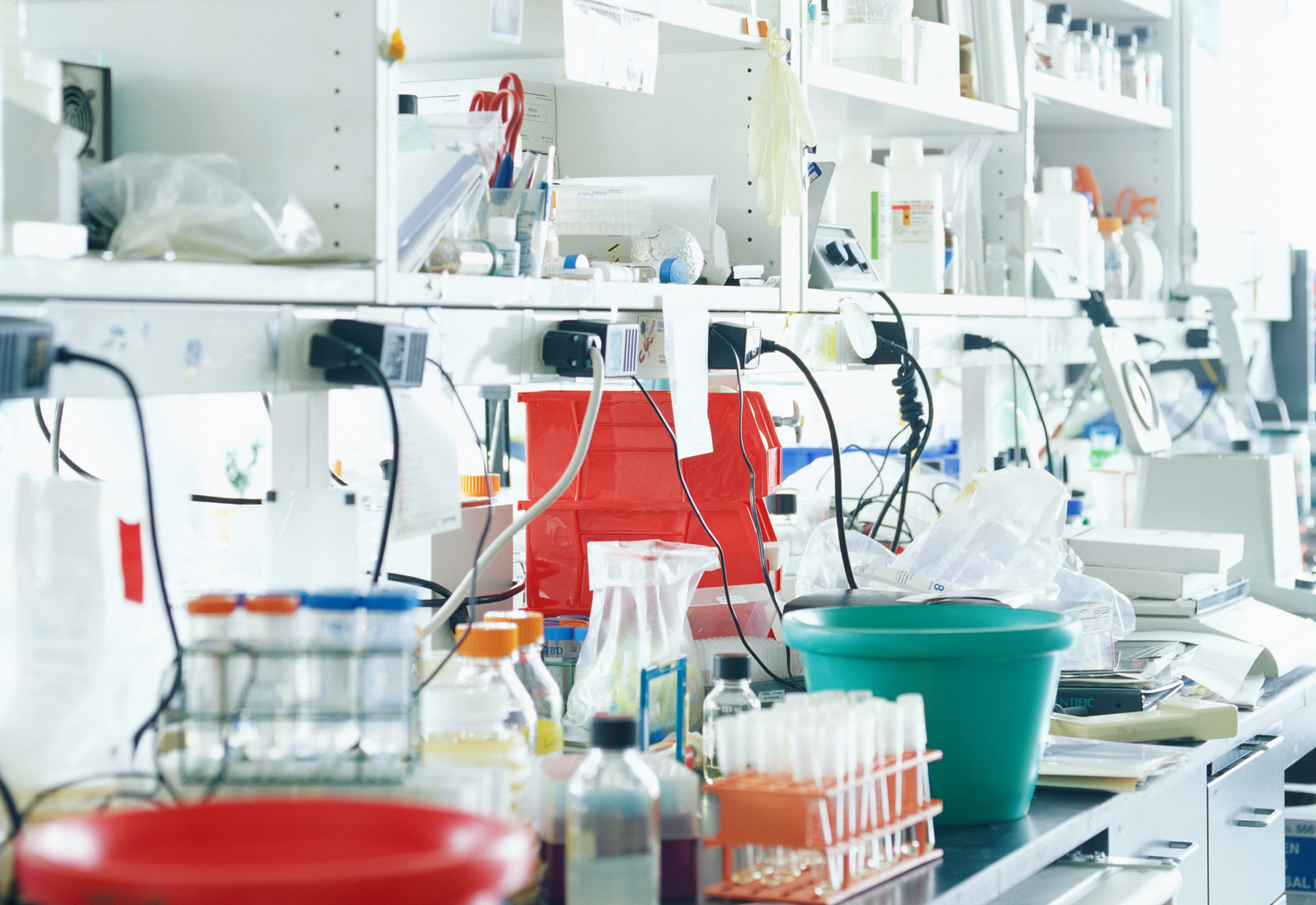When I joined my thesis lab, I was given bench space in a neglected room used mostly for extra supplies. My inner HGTV-watcher was not prepared for the mess that awaited me. A liter of ethanol, a dozen sharps containers full of slides, a mass grave of desktop monitors and a forest worth of old lab notebooks later, the room is in better shape and so is my mindset. If you feel overwhelmed by a cluttered bench or disordered space, here are some tips to getting your lab in Martha Stewart-level condition.
Stop hoarding
There is often a reluctance to get rid of anything in lab, and with good reason. You don’t want to toss a labmate’s sample or important data. But there comes a time when things have just got to go. Trash the expired reagents, empty and clean bottles full of old solutions, and let go of Styrofoam boxes that you really will not ever need. Make piles of extras like power cords and tube racks that you don’t need but can store together for later use. Also consider going through your fridges and freezers and eliminating unneeded samples. If there are old paper records in your lab, make sure to check with your lab manager and principal investigator before throwing them out, to make sure they would not be needed in the event of a data audit. Getting rid of the clutter will make the rest of the cleaning process much simpler.
Restore order
Next, decide on an organizational system. As my mom used to tell me when it was time to clean my room, there should be a place for everything, and everything should be in its place. Pick a spot in your drawers and on your shelves for key reagents and frequently used items like pipet tips and tubes. For shared materials, decide as a lab how you want to organize things. Consider alphabetizing chemicals or separating items in the fridge based on the technique they are used for. And for everything, use labels! The idea is that you should know exactly where to find everything, so you don’t lose time on a manhunt when you’re in the middle of an experiment. And if you know where everything is, you know exactly where to put it back, making life easier for your co-workers.
Get creative with lab staples
Because of the lack of built-in structure in lab shelving and drawers, it is helpful to add some dividers or containers to create concrete divisions and to corral small items. Pinterest is a great place to start for inspiration, but there’s no need to break the bank on fancy organizational products. Many of the things you already have work just fine! Pipet tip box lids are the lab equivalent to a silverware organizer. Put a bunch in your drawer and fill each one with separate supplies. Unused cardboard boxes can be great for storing extra common supplies on shelves, like serological pipets. Stash small office supplies like paper clips and rubber bands in Falcon tubes. Empty glove boxes can be transformed into personal paper towel dispensers. Another idea I am loving is adding magnets to small items like forceps, markers and timers, and attaching them to the metal near your workspace for easy access. Tap into the part of you that really wanted to decorate your locker in middle school and get creative!
Make it a habit
Despite your best organizational efforts, you will probably soon find entropy taking over as your well-thought-out system dissolves into chaos. Get in the habit of tidying up on a regular basis. In addition to staying organized, a regular cleaning routine will help you take inventory of your supplies, so you don’t run out or over order. For shared items and spaces, it is also a good idea to maintain a digital inventory. Keep this resource up to date to avoid wasting time in the -80 or starting an experiment only to realize you don’t have enough antibody.
Lab organization is not high on the priority list during the day-to-day of research, but it can be really helpful in maximizing productivity and avoiding waste. Getting your workspace in order is worth the investment. And for those who like the controlled chaos of a messy bench, please consider straightening up for your clutter-averse labmates. You are stressing us out.
Related content
Want to read more from the Johns Hopkins School of Medicine? Subscribe to the Biomedical Odyssey blog and receive new posts directly in your inbox.
